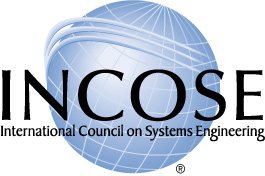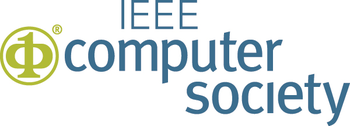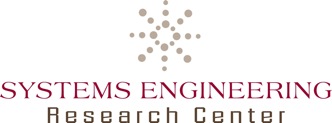Guide to the Systems Engineering Body of Knowledge (SEBoK)
The Guide to the Systems Engineering Body of Knowledge (SEBoK) was created by the Body of Knowledge and Curriculum to Advance Systems Engineering (BKCASE) project.
Systems engineering is an interdisciplinary approach and means to enable the full life cycle of successful systems, including problem formulation, solution development and operational sustainment and use. Those new to Systems Engineering can find introductory articles which provide an overview of systems engineering, place it in historical context, and discuss its economic value in Part 1 of this body of knowledge.
The BKCASE Project began in the fall of 2009. Its aim was to add to the professional practice of systems engineering by creating two closely related products:
- Guide to the Systems Engineering Body of Knowledge (SEBoK)
- Graduate Reference Curriculum for Systems Engineering (GRCSE)
The SEBoK came into being through recognition that the systems engineering discipline could benefit greatly by having a living authoritative guide closely related to those groups developing guidance on advancing the practice, education, research, work force development, professional certification, standards, etc.
At the beginning of 2013, BKCASE transitioned to a new governance model with shared stewardship between the Systems Engineering Research Center (SERC), the International Council on Systems Engineering (INCOSE), and the Institute of Electrical and Electronics Engineers Computer Society (IEEE-CS). This governance structure was formalized in a memorandum of understanding between the three stewards that was finalized in spring of 2013. The stewards have reconfirmed their commitment to making the SEBoK available at no cost to all users, a key principle of BKCASE.
Please see http://www.bkcase.org for more information.
Welcome to SEBoK v. 1.4
On behalf of the BKCASE Editorial Board and the three SEBoK steward organizations, welcome to SEBoK v. 1.4.
The SEBoK provides a compendium of the key knowledge sources and references of systems engineering that are organized and explained to assist a wide variety of users. It is a living product, accepting community input continuously, with regular refreshes and updates.
This version was released on 29 June 2015, and a number of new or modified articles reflecting the continuing evolution of the SEBoK. In particular, this release contains initial updates to reflect significant updates to key international standards. For a summary of the changes made for v. 1.4 see the Letter from the Editor. See Acknowledgements and Release History for a full description of the current and all previous SEBoK versions.
BKCASE History, Motivation, and Value
The Guide to the Systems Engineering Body of Knowledge (SEBoK) is a living authoritative guide that discusses knowledge relevant to Systems Engineering, how the knowledge should be structured to facilitate understanding, and what documents are the most important to the discipline. The curriculum guidance in the Graduate Reference Curriculum for Systems Engineering (GRCSE) (Pyster and Olwell et al. 2012) makes reference to sections of the SEBoK to define its core knowledge; it also suggests broader program outcomes and objectives which reflect aspects of the professional practice of systems engineering as discussed across the SEBoK.
Between 2009 and 2012 BKCASE was led by Stevens Institute of Technology and the Naval Postgraduate School in coordination with several professional societies and sponsored by the U.S. Department of Defense (DoD), which provided generous funding. More than 75 authors and many other reviewers and supporters from dozens of companies, universities, and professional societies across 10 countries contributed many thousands of hours writing the SEBoK articles; their organizations provided significant other contributions in-kind. For additional information on the BKCASE authors, please see the Acknowledgements and Release History article.
The first value of the BKCASE project has simply been the greater sense of community that has developed among the authors, which include many fellows of professional societies and other leaders in the field. For example, the relationship between Systems Science and Systems Engineering is now more clearly understood than in the past. This relationship is captured in Parts 2 and 3 of the SEBoK.
The greater value of the SEBoK, of course, comes from use by the community. As of the end of May 5014, SEBoK articles have been accessed more than ???,000 times by over ???,000 users. We hope the SEBoK will regularly be used by thousands of systems engineers around the world as they undertake technical activities such as eliciting requirements, creating systems architectures, or analysis system test results; and professional development activities such as developing career paths for systems engineers, deciding new curricula for systems engineering university programs, etc.
About the SEBoK
Systems engineering has its roots in the fundamentals, principles, and models of systems thinking. It is applied through the application of systems engineering processes within a managed life cycle working with a number of other management, engineering, and specialist disciplines. While traditionally applied to product development, systems engineering can also be applied to service and enterprise systems. As systems engineering is a collaborative approach it relies on enabling competencies and structures at individual, team, and organizational levels.
The SEBoK is organized into 7 parts, with a Glossary of Terms and a list of Primary References, to reflect the scope of Systems Engineering knowledge and its links into other bodies of knowledge.
- Part 1 discusses the SEBoK's scope and structure, including its hierarchy of parts, knowledge areas, and topics.
The other parts include:
- Part 2 Foundations of Systems Engineering
- Part 3 Systems Engineering and Management
- Part 4 Applications of Systems Engineering
- Part 5 Enabling Systems Engineering
- Part 6 Related Disciplines
- Part 7 Systems Engineering Implementation Examples
Part 1 also includes a discussion of SEBoK Users and Uses, including a number of use cases which give advice on how different groups of users might navigate and use the SEBoK. This is a good place to start if you are new to the SEBoK. Individuals who are new to systems engineering can start with Use Case 0: Systems Engineering Novices.
Articles in the SEBoK can be found by using the Search field in the upper right corner of each page, as well as through the Quicklinks, Outline, and Navigation menus in the left margin of each page. Detailed instructions about the page layout and features are found in How to Read the SEBoK. There is a link in the left margin under Quicklinks explaining how to Cite the SEBoK correctly.
As a living document, at the bottom of each page, version identification can be found in a link called "About the SEBoK." A PDF of the SEBoK v. 1.4 - as well as archive copies of versions 1.0, 1.1, 1.2, and 1.3 - may be downloaded at Download SEBoK PDF.
As the SEBoK is a compendium, much of the content has restricted intellectual property rights. This copyright information is placed on each page, and must be respected. The SEBoK copyright is held by the BKCASE Board of Governors.
About SEBoK Updates and the Sandbox
The SEBoK is sometimes compared to Wikipedia. The SEBoK is like Wikipedia in its most fundamental structure, as it is a collection of electronic articles built on MediaWiki technology. However, the SEBoK is unlike Wikipedia in that its content is carefully controlled. Anyone in the community can suggest changes be made to SEBoK articles, but the Editorial Board will review all recommendations before they are actually implemented in the SEBoK wiki.
New releases of the SEBoK are under the control of a Governing Board appointed by the stewards, who oversee the SEBoK Editor in Chief and Editorial Board. The stewards contribute resources to manage the SEBoK wiki, support new releases, and encourage SEBoK adoption. Volunteer authors from the worldwide SE community continue to propose and create new content and other volunteers review that new content.
Wikipedia is a much more open wiki, allowing virtually anyone to change any article, while reserving the right to undo changes that are offensive or otherwise violate Wikipedia's rules. Tight control over SEBoK content is a trade-off. Such control ensures a stable baseline whose quality and integrity are assured by its editors. On the other hand, such control discourages some members of the community from contributing improvements to the SEBoK.
Comments can be left on any page of the current SEBoK version using the DISQUS feature. These are periodically reviewed. Comments can be flagged in DISQUS, which will result in a faster review by the editors. You may also review the current Editorial Board and contact editors directly about the materials in their areas of responsibility.
To satisfy the need for a stable baseline and the desire for broader community involvement, the Editorial Board has implemented a collaborative space. The SEBoK Sandbox is a copy of the SEBoK that is separate from the baseline version where anyone in the community can edit articles, recommend new content, or provide comments on existing articles. It is important to note that while anyone in the community can gain access to the Sandbox, all submissions must still be approved by the Editorial Board before they will be folded into a new baseline version of the SEBoK. For more information on how this works, please visit the Sandbox.
The Sandbox associated with v. 1.4 will open in August 2015, allowing the community to propose changes for v. 1.5, which is expected to be released in December 2015.
The BKCASE Editorial Board uses the in line comments, collaboration via the sandbox and direct involvement with community groups and individuals to coordinate regular review and update of the SEBoK in a way which is both controlled and transparent. To find out more and to contact the editors please visit http://www.bkcase.org.
Email may be sent to bkcase.incose.ieeecs@gmail.com.

|
|
SEBoK Discussion
Please provide your comments and feedback on the SEBoK below. You will need to log in to DISQUS using an existing account (e.g. Yahoo, Google, Facebook, Twitter, etc.) or create a DISQUS account. Simply type your comment in the text field below and DISQUS will guide you through the login or registration steps. Feedback will be archived and used for future updates to the SEBoK. If you provided a comment that is no longer listed, that comment has been adjudicated. You can view adjudication for comments submitted prior to SEBoK v. 1.0 at SEBoK Review and Adjudication. Later comments are addressed and changes are summarized in the Letter from the Editor and Acknowledgements and Release History.
If you would like to provide edits on this article, recommend new content, or make comments on the SEBoK as a whole, please see the SEBoK Sandbox.
blog comments powered by Disqus
